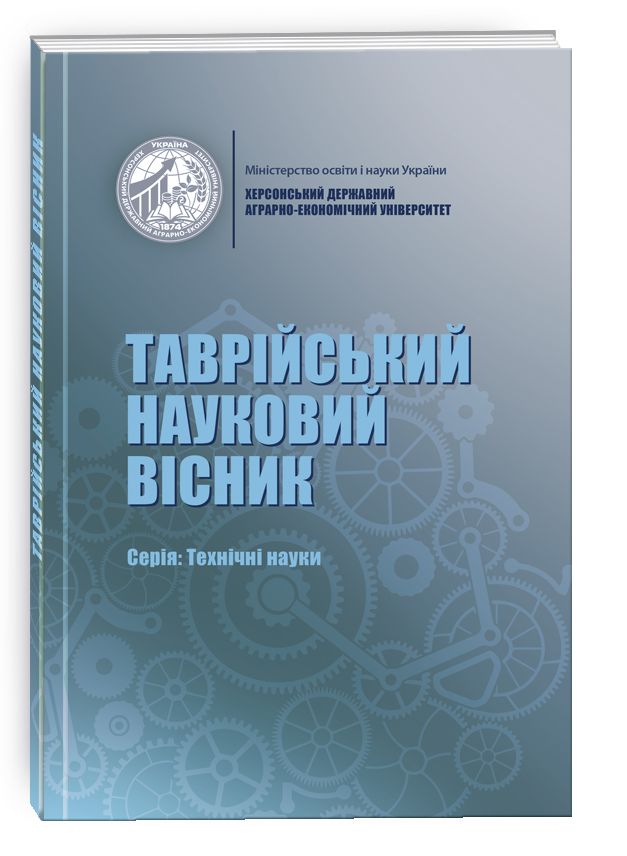СLASSIFICATION AND FEATURES OF DATA COLLECTION IN ADMINISTRATIVE DECISION SUPPORT SYSTEMS
DOI:
https://doi.org/10.32782/tnv-tech.2023.4.3Keywords:
data, control, collection, database, software, management, method, sourceAbstract
Decision support systems are the development of computer management decision support systems (DDS) using the principle of proactive computing, i.e. transferring human actions to a higher level of management and using algorithms of intelligent data processing and machine learning. Taking preventive decisions can lead to cost savings in the management of processes, in particular, the management of transport infrastructure based on the analysis of large volumes of heterogeneous data. In the concept of proactive systems, there is a scheme: detect, predict, make decisions, act, and the principles of building an EMS, taking into account the processing of events. When implementing transport infrastructure management, a critical task is the task of efficient processing of various data received from various sources. The quality and timeliness of data affects the efficiency and effectiveness of decision-making. In the modern discussion there is the issue of developing approaches to effective data collection and processing, finding new ways of storage and preliminary analysis. The exponential growth of the volume of data and the increase of the network bandwidth provided for data transmission opens up new opportunities for managing the transport infrastructure, but at the same time there are problems of efficient data processing. The statistics provide a classification of data based on various criteria. We have seen the following types of data that are analyzed in proactive systems to support decision making: sensors data, log data, visual data – images or videos, textual data, social data alnikh merezh (social data) geospatial data. We have analyzed the features and problems of collecting and collecting various data from proactive systems to support the adoption of management decisions. The following features were observed: the need for special data formats, the need to ensure data consistency; the need to minimize human participation in the process of collecting diverse data; ensuring the collection of data in real time.
References
Llinas, J. Multisensor Data Fusion. MA: Artech House. 2015.
Hall, D. Mathematical Techniques in Multisensor Data Fusion. Boston, MA: Artech House. 2017.
Connecting the Physical World with Pervasive Networks. D. Estrin, D. Culler, K. Pister, G. Sukhatme. IEEE Pervasive Computing 1, 2012, (1).
Codd, E. F. Providing OLAP (On-Line Analytical Processing). E. F. Codd & Associates, 2017.
Benchmark for OLAP on NoSQL technologies comparing NoSQL multidimensional data warehousing solutions. 2015 IEEE 9th International Conference on Research Challenges in Information Science (RCIS), Athens. 2015.
Твердохліб А.О., Коротін Д.С. Ефективність функціонування комп’ютерних систем при використанні технології блокчейн і баз данних. Таврійський науковий вісник. Серія: Технічні науки, 2022, (6)
Цвик О.С. Аналіз і особливості програмного забезпечення для контролю трафіку. Вісник Хмельницького національного університету. Cерія: Технічні науки, 2023, (1).
Новіченко Є.О. Актуальні засади створення алгоритмів обробки інформації для логістичних центрів. Таврійський науковий вісник. Серія: Технічні науки, 2023 (1).
Зайцев Є.О. Smart засоби визначення аварійних станів у розподільних електричних мережах міст. Таврійський науковий вісник. Серія: Технічні науки, 2022, (5).
Hall, D. L. An introduction to multisensor data fusion. Proceedings of the IEEE. 2019. Vol. 85(1).
Khaleghi, B. Multisensor data fusion: A review of the state-of-the-art. Information Fusion, Vol. 14(1). 2013.
Hashem, I. A.T. The rise of ‘Big Data’ on Cloud Computing: Review and Open Research Issues. Information Systems. 2015. Vol. 47.
Michele, D.C. An Architecture for Sentiment Analysis in Twitter. D.C. Michele, D.N. Emanuel, P. Alfredo. International Conference on E-learning 15. Berlin, Germany. 2015.
Geospatial data generation and preprocessing tools for urban computing system development. Golubev et al. Procedia Comput. Sci. (101). 2016.
Mahler, R.P.S. Statistical Multisource-Multitarget Information Fusion. Artech House, Boston, MA. 2007.
Evaluating the sustainability of Volgograd. Садовникова Н.П., Parygin D., Gidkova N., Gnedkova E., Sanzhapov B. WIT Transactions on Ecology and the Environment. 2014. No. 179 (Vol. 1).
Яцишин А.Ю. Проектування гібридних сховищ даних з врахуванням структурованості даних. Управління розвитком складних систем. 2012. (9)
Патракеєв І. М. Моделювання динамічних об’єктів транспортної системи міста методами штучного інтелекту. Харків, ХНАМГ, 2010.
Кучук Г.А. Метод синтезу логічної структури мережевої бази даних. Системи обробки інформації. 2001. (2).
Степанов, С.Ю. Технологічна платформа для розподілених гетерогенних систем збирання та обробки даних. Науковий альманах. 2017. № 2–3(28).
Khaleghi, B. Multisensor data fusion: A review of the state-of-the-art. Information Fusion, Vol. 14 (1). 2013.






